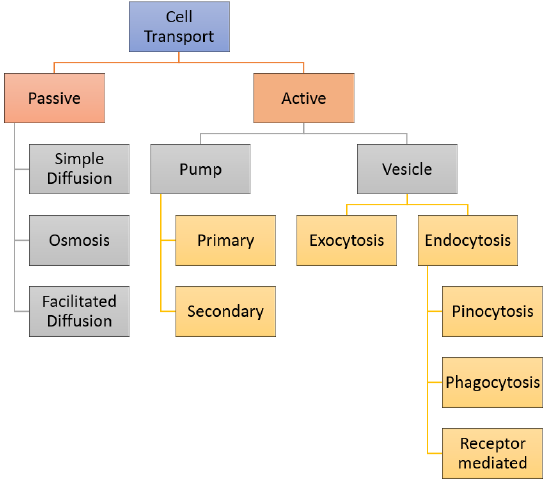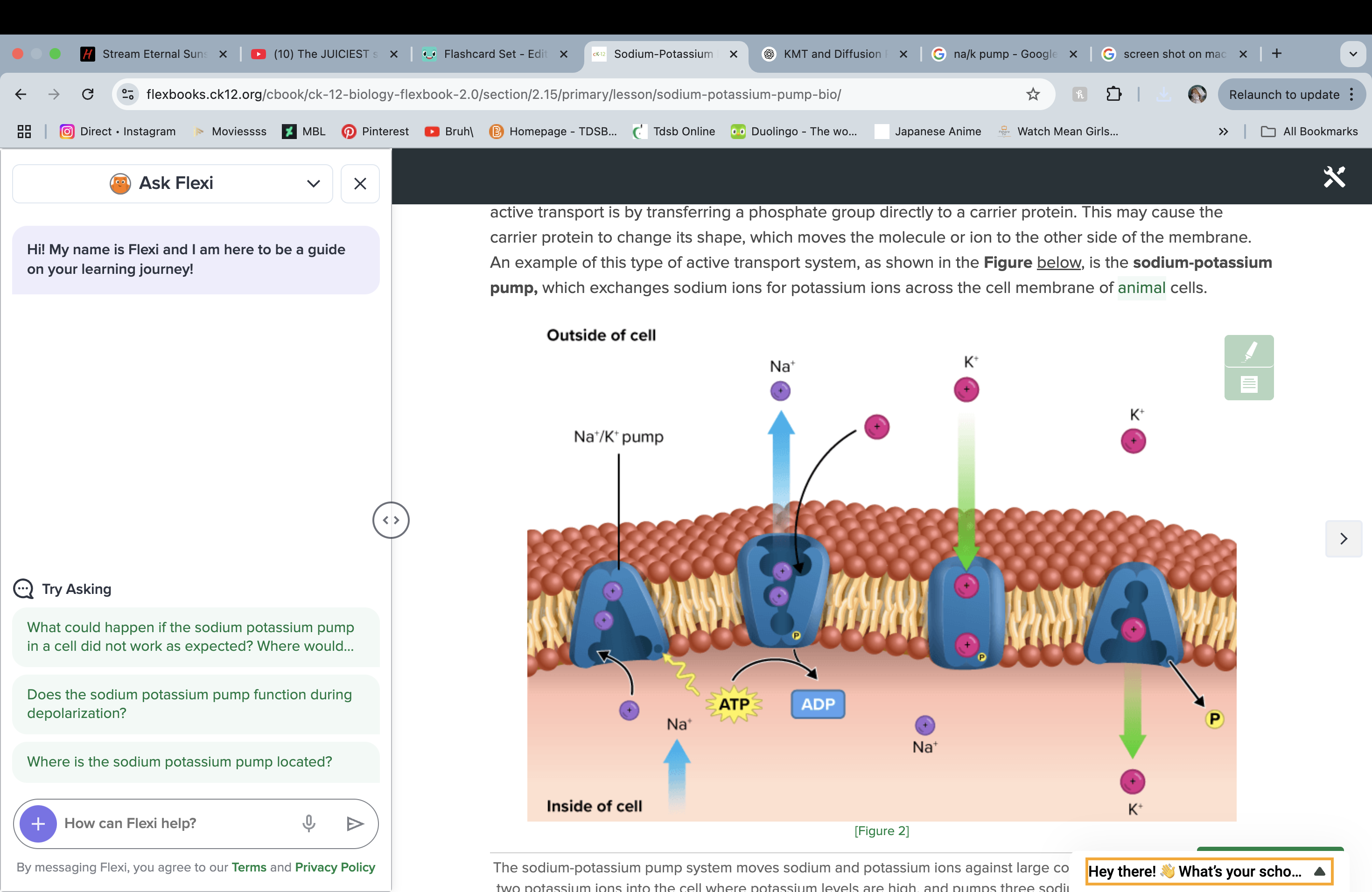Transport Across Membranes
1/10
There's no tags or description
Looks like no tags are added yet.
Name | Mastery | Learn | Test | Matching | Spaced |
|---|
No study sessions yet.
11 Terms
Difference Between Passive and Active transport? Create a flow chart.
Passive transport is the movement of a substance across a membrane without energy. Goes with the concentration gradient
Active transport is the movement of a substance across a membrane with energy. Goes agaisnt the concentration gradient.

What is homeostasis?
Homeostasis is how cells are constanly changing to adapt to the external enviorment by maintaining a stable internal condition
What is the Kinetic Molecular Theory and how does it relate to diffusion? What is Brownian Motion? How does it relate to all this?
Kinetic Molecular Theory
all matter is made of particles
the particles are always in motion
heat energy increases the motion of these particles
Diffusion is the net movement of particles going from a high to low concentration. This all happens due to the kinetic molecular theory
Brownian Motion is how random movement and collisions in solution and gas allow for diffusion to happen
Explain the three types of Passive Transport and how it works.
Simple Diffusion: allows small and non polar molecules to move through the phospholipid bilayer quickly in comparison to the other ones. For example oxygen, carbon dioxide, water, glycerol and non polar hormones
Facillitated Diffusion : the transport of ions and polar molecules with the usage of a protein carrier.
Transport proteins are embedded in the membrane and there are two types :
Channel Proteins : hydrophilic so it can allow water and ions to pass through. It is activated by voltage and muscle contractions happen this way
Carrier Proteins : bind with the molecule and changes shape to transport the molecule
Osmosis is the diffusion of water through a semipermeable membrane
Explain the three types of solutions involving Osmosis. What would happen if an animal cell or plant cell was placed in these solutions .
Isotonic : when the concentration of a solute is the same in both the extracellular and intracellular fluid so there is no net movement of water
Hypertonic : When the concentration of solute is greater outside so water moves out
When an animal cell is placed inside, water moves out causing the cell to shrivel which is called crenation. This may cause the plant to die
When a plant cell is placed inside, the cytoplasm loses water causing the cytoplasm to shrivel. This will cause the plant to wilt aka plasmolysis. Turgor pressure decreases
Hypotonic : When the concentration is greater inside so water moves in
When an animal cell is placed in, water rushes inside which may cause the cell to burst aka cytolysis. Osmotic pressure increases
When a plant cell is placed in, water rushes in causing the cytoplasm to push up against the cell causing the plant to be turgid
Which factors affect diffusion rate?
temperature, pressure, cencentration difference, size, polarity, surface area, diffusion difference, facillited difference(protein)
What are the two types of active transport?
There is protein carriers and vesicle formation
Protein carriers is when the object attaches to the protein and is then pumped across the membrane. There are two types.
Vesicle formation is when vesicles are formed to transport materials across a membrane
Explain the two types of Protein Carriers
Primary Active Transport : moves mostly positive ions across membrane. This creates a voltage across membranes as there is an electrical difference on both sides.
The voltage and the difference of ion concentration of the membrane creates an electrochemical gradient
Secondary Active Transport : uses the electrochemical gradient made by the primary active transport
Two types :
Symport ; movement in the same direction
Antiport : Movement in the opposite direction
In both the ion goes with the gradient and the solute goes against

Explain how Na+/K+ pumps work
NA binds to protein
ATP gives phosphate group to bind with the protein
Transport potein changes shape and realeases Na+ to the outside allowing K+ to bind (binding site)
In the first step 3 Na+ and 2K+ goes through. This leaves the outside with a positive charge and the outside with a negative charge = Voltage
Explain all the types of Vesicle Formation
Endocytosis : the import of materials in cells (proteins and large molecules)
Phagocytosis : solid cells get wrapped and pinches off into a vesicle
Phagocutosis is commonly used by macrophages that wraps around foreign bodies
Pinocytosis : liquid cells stick to a pit and the membrane wraps around and pinches off
Receptor Mediated Cytosis : molecule binds to receptor protein, then the pit becomes coated in protein (clatherin) and it breaks off
Exocytosis ; the export of materials out of cells
vesicle forms at golgi body with proteins that have use elsewhere
vesicles atttach to cell membrane and fuses to it causing the waste to be dumped out
What is Diabetes? Cystic Fibrosis?
Diabetes is the inability to absorb glucose.
insulin binds a receptor protein which triggers a chain of reactions that allows transport protein to open for glucose to come in trhough facillitated diffusion
With diabetes, the body can not produce enough or any insulin so blood sugar increases
Thirst, moodyness, blindness, circulatory problems, fainting, unconcioisness
Cystic Fibrosis : overproduction of mucus
gene that codes for CFTR is missing so that Cl- can’t diffuse from the intestinal tract to the mucus lining.
Then Na+ can’t diffuse either so then water won’t diffuse either. This leaves the mucus sticky and thick
Mucus stays hypertonic